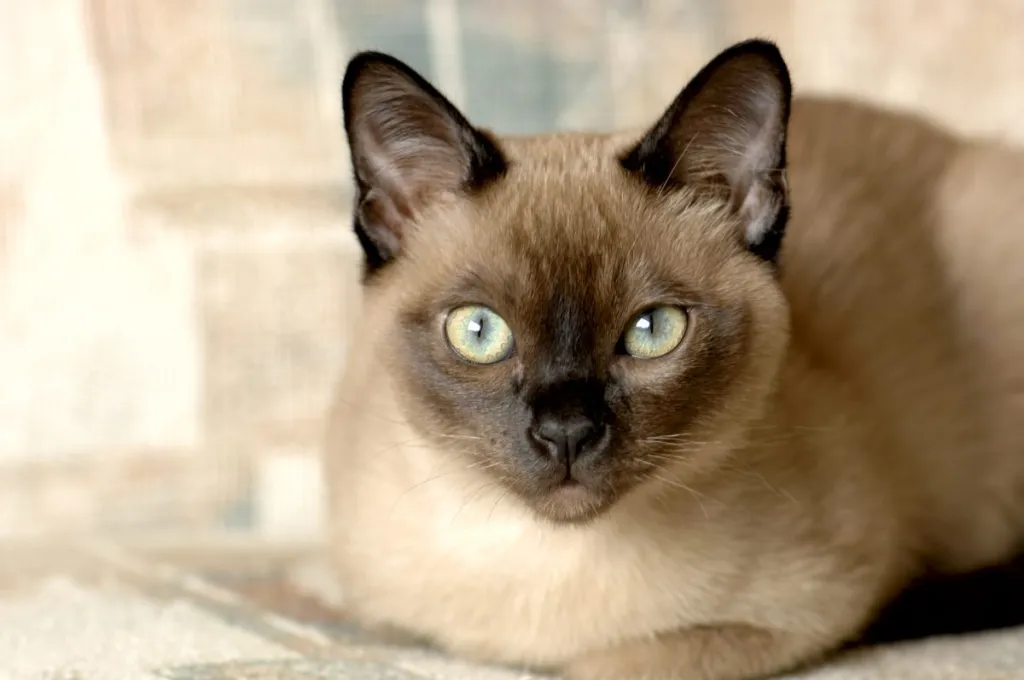Tonkinese cats are a charming breed known for their distinctive appearance and engaging personalities. Originating from the crossbreeding of Siamese and Burmese cats, they boast a unique coat that typically combines the sable’s warmth with the Siamese’s color points. The Tonkinese rose to national recognition in the 1960s when Jane Barletta promoted the breed on Jeopardy! while being a contestant.
Renowned for their social nature and tender attitude, Tonkinese cats make delightful companions and are loved for their playful, lively, and curious nature. Their active interest in family activities and their taste for interactive play make them a popular choice among cat lovers seeking a warm and loving feline companion.
When considering a Tonkinese, it’s advisable to prioritize adopting from rescue organizations or shelters to provide a loving home to a cat in need. However, if you decide to purchase a Tonkinese kitten, it’s crucial to choose a reputable breeder. Conduct thorough research to ensure that the breeder follows ethical practices and prioritizes the well-being of their cats. Reputable Tonkinese breeders prioritize the health and temperament of their cats, conduct necessary health screenings, and provide a nurturing environment for the kitties. This active approach ensures that you bring home a healthy and happy kitty while discouraging unethical breeding practices.
Quick Facts
- Origin: United States
- Size: Medium
- Breed Group: Oriental
- Lifespan: 12-17 years
- Coat: Short, fine, and silky
- Temperament: Intelligent, playful, and doting
- Exercise Needs: Moderate to high
- Training: Easy to train
- Grooming: Weekly brushing
- Health: Generally healthy, but can be prone to certain genetic health conditions, such as heart disease (HCM) and dental problems
- The largest litter of cats ever born was to a Tonkinese. There were 19 kittens in the litter.
- The Tonkinese coat is temperature sensitive: the cooler parts are darker.
- A long-haired Tonkinese is sometimes called a Tibetan.
Tonkinese Pictures
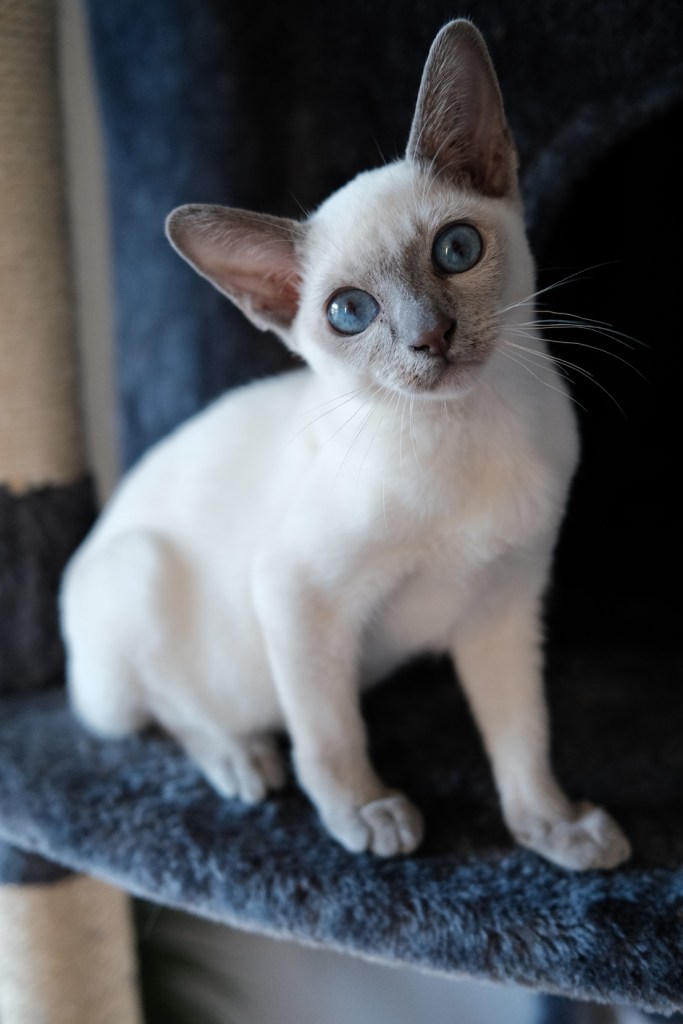
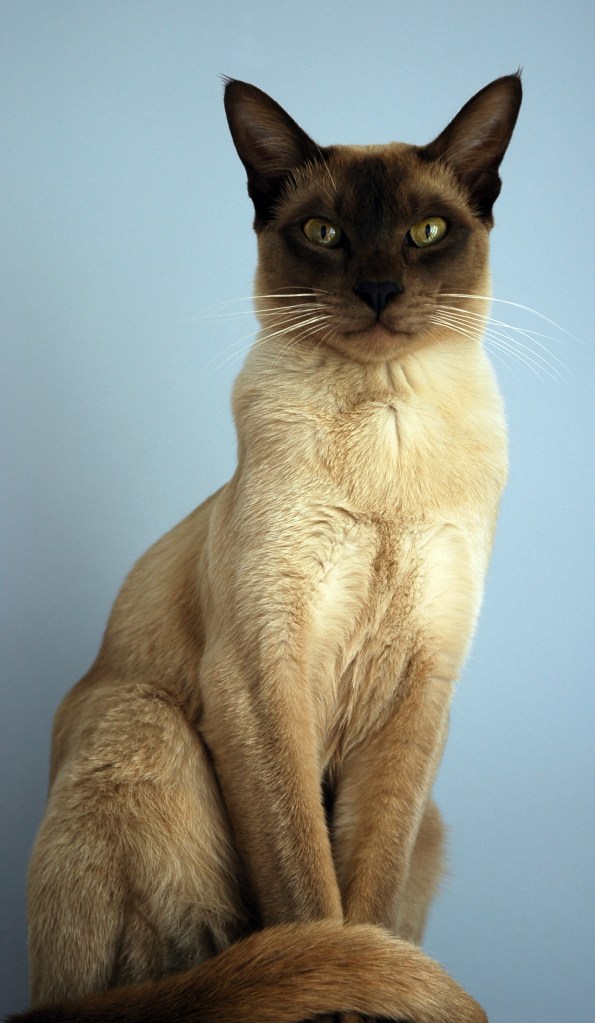
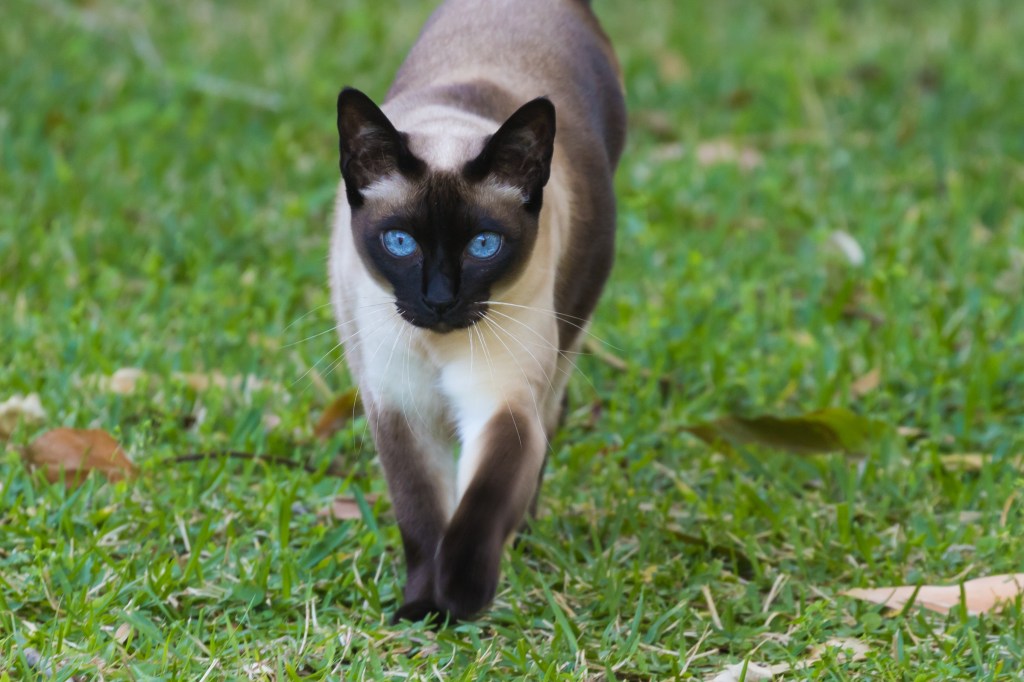
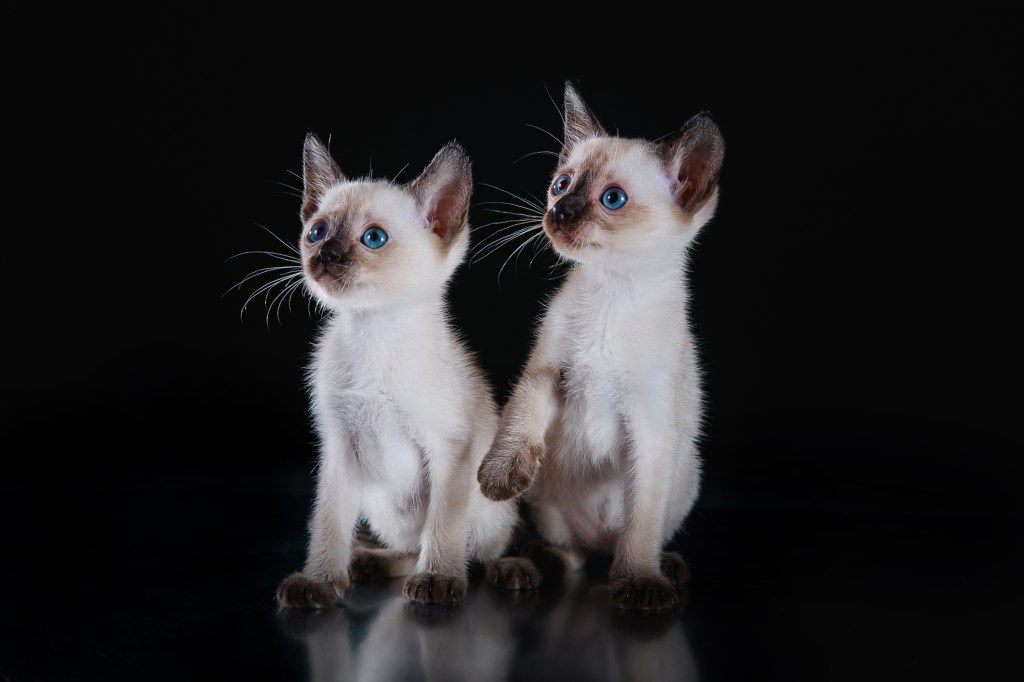
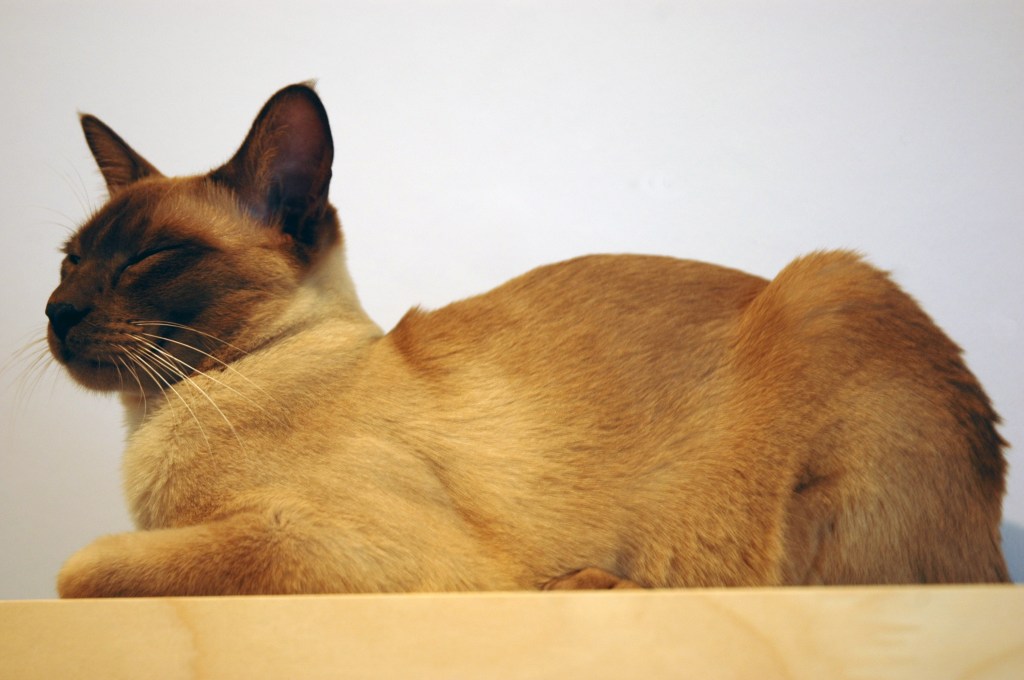
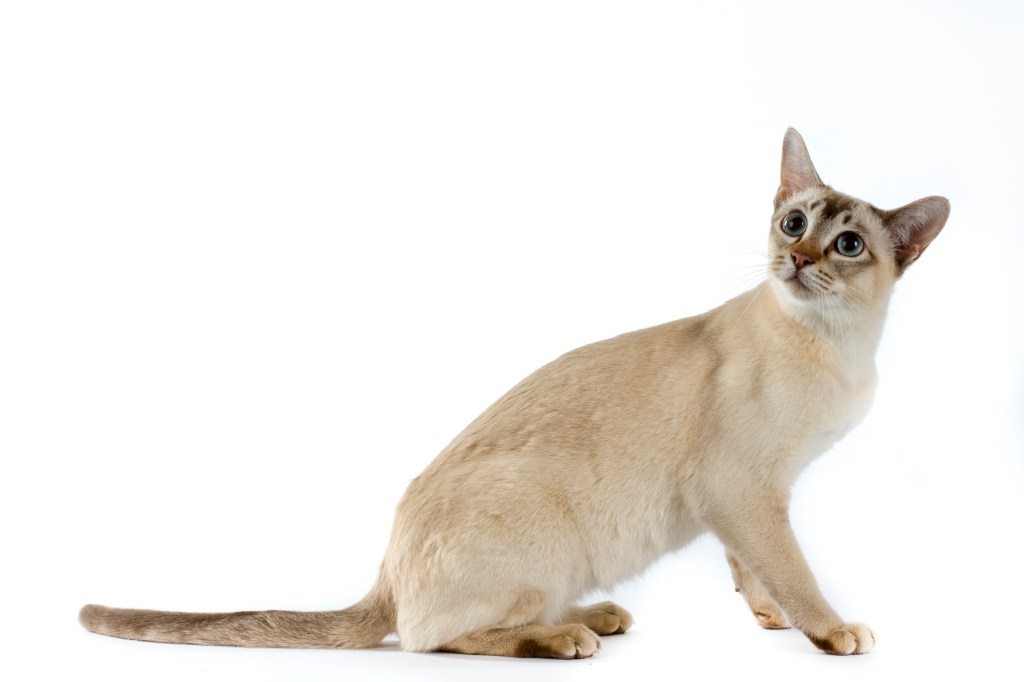
-
Affectionate with Family
Some cat breeds are typically independent and aloof, even if they’ve been raised by the same person since kittenhood; others bond closely to one person and are indifferent to everyone else; and some shower the whole family with affection. Breed isn’t the only factor that goes into affection levels; cats who were raised inside a home with people around feel more comfortable with humans and bond more easily.

See Cats Less Affectionate with Family -
Amount of Shedding
If you’re going to share your home with a cat, you’ll need to deal with some level of cat hair on your clothes and in your house. However, shedding does vary among the breeds. If you’re a neatnik, you’ll need to either pick a low-shedding breed or relax your standards. This furniture cover can make it easier to clean up cat hair and keep it off your sofa!
-
General Health
Due to poor breeding practices, some breeds are prone to certain genetic health problems. This doesn’t mean that every cat of that breed will develop those diseases; it just means that they’re at an increased risk. If you’re looking only for purebred cats or kittens, it’s a good idea to find out which genetic illnesses are common to the breed you’re interested in.
-
Potential for Playfulness
Some cats are perpetual kittens—full of energy and mischief—while others are more serious and sedate. Although a playful kitten sounds endearing, consider how many games of chase the mouse-toy you want to play each day, and whether you have kids or other animals who can stand in as playmates. A classic wand cat toy like this one is perfect for playful felines!
-
Tendency to Vocalize
Some breeds sound off more often than others with meows, yowls, and chattering. When choosing a breed, think about how the cat vocalizes and how often. If constant “conversation” drives you crazy, consider a kitty less likely to chat.
-
Kid-Friendly
Being tolerant of children, sturdy enough to handle the heavy-handed pets and hugs they can dish out, and having a nonchalant attitude toward running, screaming youngsters are all traits that make a kid-friendly cat. Our ratings are generalizations, and they’re not a guarantee of how any breed or individual cat will behave; cats from any breed can be good with children based on their past experiences and personality.
-
Friendly Toward Strangers
Stranger-friendly cats will greet guests with a curious glance or a playful approach; others are shy or indifferent, perhaps even hiding under furniture or skedaddling to another room. However, no matter what the breed, a cat who was exposed to lots of different types, ages, sizes, and shapes of people as a kitten will respond better to strangers as an adult.
-
Easy to Groom
Some breeds require very little in the way of grooming; others require regular brushing to stay clean and healthy. Consider whether you have the time and patience for a cat who needs daily brushing. You should definitely pick up this awesome de-shedding tool for cats of any hair length!
-
Intelligence
Some cat breeds are reputed to be smarter than others. But all cats, if deprived the mental stimulation they need, will make their own busy work. Interactive cat toys are a good way to give a cat a brain workout and keep them out of mischief. This scratcher cat toy can keep your smart kitty busy even when you’re not home!
-
Pet Friendly
Friendliness toward other household animals and friendliness toward humans are two completely different things. Some cats are more likely than others to be accepting of other pets in the home.
Tonkinese History
The Tonkinese is the love child of the Siamese and Burmese breeds. The two breeds from Southeast Asia were crossed in an attempt to create a cat with a moderate body type, a less piercing voice than the Siamese but with loving nature and intelligence shared by both the Siamese and Burmese.
But the story of their affair began with a case of mistaken identity. Wong Mau, a small, dark-brown cat, belonged to Dr. Joseph Thompson. A sailor, knowing of Dr. Thompson’s interest in felines, had brought him the cat, acquired in a far-away port. Wong Mau was at first thought to be a Siamese with a chocolate-colored coat. Such Siamese weren’t unheard of. “Chocolate Siamese” were described in the 1880s. Their bodies were tan or brown, and they had seal-brown or nearly black points.
The seal-point Siamese, also known as royal Siamese, had lighter bodies that contrasted with their dark points and were preferred by breeders and the public. The chocolate-colored cats eventually disappeared in Britain, but they still existed in Thailand and Burma (now known as Myanmar), where they were probably the offspring of natural (as opposed to human-directed) matings between free-roaming Siamese and Burmese cats. Wong Mau was one of them. It was her destiny to become the matriarch of two new breeds: the Burmese and, later, the Tonkinese.
The first deliberate crosses between Siamese and Burmese began in the 1950s with Milan Greer, who called the cats “golden Siamese.” He didn’t continue his breeding program, but other breeders became interested in producing a dark-brown cat with points and crossed Siamese with Burmese to do so. The Canadian Cat Association began registering the “Tonkanese” in 1967 and other cat associations eventually followed suit, although some, such as the Cat Fanciers Association, did not grant recognition until almost 20 years later, in 1984.
The name under its original spelling of Tonkanese was said to reference the musical South Pacific, which featured an island where no one discriminated against “half-breeds.” There was often confusion about the spelling, however, so in 1971 the name was officially changed to Tonkinese—after the exotic-sounding Bay of Tonkin in Vietnam—even though the cats had no association with that country.
Tonkinese Size
The Tonk feels surprisingly heavy when picked up and can weigh six to 12 pounds or more.
Tonkinese Personality
The Tonk, as he’s nicknamed, is friendly, active and loving. If you think of cats as being aloof and independent, it’s only because you haven’t yet met a Tonkinese. He demands attention and affection and won’t rest until he gets it. This is a cat who will follow you around, ride on your shoulder and be involved in all family activities. He likes meeting people and is not the type of cat who will be satisfied to stay home alone all the time. If you work during the day, it’s a good idea to make sure he has a friend to keep him occupied, whether it’s another Tonkinese or other cat or even a dog.
Like his forebear the Siamese, the Tonk is brainy and active. He likes to jump up to high places, retrieves as if he were born to it, masters puzzle toys instantly and will learn to walk on leash if you so desire. Teach him tricks and provide him with a rotating assortment of interactive toys to keep his mind and body exercised.
Tonkinese can be stubborn in their quest to get their own way, but their clownish behavior is so endearing that it doesn’t really matter. A Tonk is talkative, although his voice is not as loud and raspy as that of a Siamese. The Tonk also has a softer side. He loves sitting in a lap and will claim yours just as soon as you sit down.
Tonkinese Health
Both pedigreed cats and mixed-breed cats have varying incidences of health problems that may be genetic in nature. Tonkinese are generally healthy, although they can be prone to gingivitis and may be sensitive to anesthesia. Because they descend from the Siamese, albeit relatively far up on their family tree, they may also develop some of the same diseases that affect the Siamese, including the following:
- Amyloidosis: This is a disease that occurs when a type of protein called amyloid is deposited in body organs, primarily the liver in members of the Siamese family
- Asthma/Bronchial Disease: Asthma in cats, also known as feline bronchial asthma, is a common respiratory condition that affects the airways of felines, causing difficulty in breathing. This condition is characterized by the inflammation and constriction of the small air passages within a cat’s lungs, resulting in various respiratory symptoms.
- Congenital Heart Defects: Congenital heart defects refer to abnormalities in the heart’s structure or function that are present at birth. These can range from relatively minor issues to severe, life-threatening conditions. Some congenital heart defects might not display noticeable symptoms initially but can cause problems later in life.
- Crossed Eyes: Tonkinese cats, like many other breeds, can occasionally display a condition known as strabismus, which results in crossed eyes. This can happen due to various factors, including genetics, injury, or underlying health issues.
- Gastrointestinal Conditions: Tonkinese cats, like many other cat breeds, can experience a range of gastrointestinal issues, such as megaesophagus.
- Hyperesthesia Syndrome: This is a neurological problem that can cause cats to excessively groom themselves, leading to hair loss, and to act frantically, especially when they are touched or petted.
- Lymphoma: Lymphoma is one of the most common types of cancer in cats, affecting their lymphatic system. The lymphatic system is a part of the immune system, and lymphoma occurs when cancerous cells develop from lymphocytes, a type of white blood cell. This condition can manifest in various parts of a cat’s body, such as the lymph nodes, liver, spleen, intestines, or other organs.
- Nystagmus: This is a neurological disorder that causes involuntary rapid eye movement.
- Progressive Retinal Atrophy: Progressive retinal atrophy (PRA) is a genetic condition that affects the eyes of cats and leads to progressive vision loss. It primarily involves the degeneration of the photoreceptor cells in the retina, ultimately resulting in blindness. This condition usually occurs due to a genetic mutation and can affect various breeds, including domestic cats.
Tonkinese Care
The soft, short coat of the Tonkinese is easily cared for with weekly brushing to remove dead hair and distribute skin oil. A bath is rarely necessary. Brush the teeth to prevent periodontal disease. Daily dental hygiene is best, but weekly brushing is better than nothing. Wipe the corners of the eyes with a soft, damp cloth to remove any discharge. Use a separate area of the cloth for each eye so you don’t run the risk of spreading any infection.
Check the ears weekly. If they look dirty, wipe them out with a cotton ball or soft damp cloth moistened with a 50-50 mixture of cider vinegar and warm water. Avoid using cotton swabs, which can damage the interior of the ear.
Keep the litter box spotlessly clean. Like all cats, Tonkinese are very particular about bathroom hygiene. It’s a good idea to keep a Tonkinese as an indoor-only cat to protect him from diseases spread by other cats, attacks by dogs or coyotes, and the other dangers that face cats who go outdoors, such as being hit by a car. Tonkinese who go outdoors also run the risk of being stolen by someone who would like to have such a beautiful cat without paying for it.
Tonkinese Coat Color And Grooming
The Tonkinese is a medium-size cat with a moderate body. Goldilocks would have liked him: he’s not too sleek and he’s not too chunky; for Tonk fans, he’s just right. A Tonk’s head is a slightly rounded wedge shape, a little longer than it is wide. Medium-size ears are broad at the base with oval tips, and aqua, blue, green or yellow-green eyes (depending on coat color) are an open almond shape, slanting along the cheekbones toward the outer edge of the ear.
The muscular body is supported by slim legs on oval paws. The tail is proportionate in length to the body and tapers toward the end. The short coat of the Tonkinese comes in a medium thickness and feels soft and silky. It comes in “mink,” solid, and pointed shades in natural, champagne, blue and platinum, for a total of 12 different colorways.
Mink Tonkinese have a body color that is rich, even and unmarked, shading almost imperceptibly to a slightly lighter shade on the underparts, with a distinct contrast between body color and points. For example, a champagne mink Tonkinese has a buff-cream to beige body, which may have reddish highlights, medium-brown points, cinnamon-brown nose leather, and cinnamon-pink to cinnamon-brown paw pads. A natural solid Tonk has a sable-brown body with dark-brown points and nose leather and medium- to dark-brown paw pads. A platinum-pointed Tonkinese has a pearly white body, frosty gray points, lavender-pink or lavender-gray nose leather, and lavender-pink paw pads. At a show, you will most likely see only see mink Tonkinese, but solid and pointed Tonks carry the genes that are necessary for a successful breeding program.
Children And Other Pets
The active and social Tonkinese is a perfect choice for families with children and cat-friendly dogs. He will play fetch as well as any retriever, learns tricks easily and loves the attention he receives from children who treat him politely and with respect. He lives peacefully with cats and dogs who respect his authority. Always introduce pets slowly and in controlled circumstances to ensure that they learn to get along together.
Tonkinese Rescue Groups
More Info For You
If you’re also looking for a dog, check out DogTime’s dog breed page!
